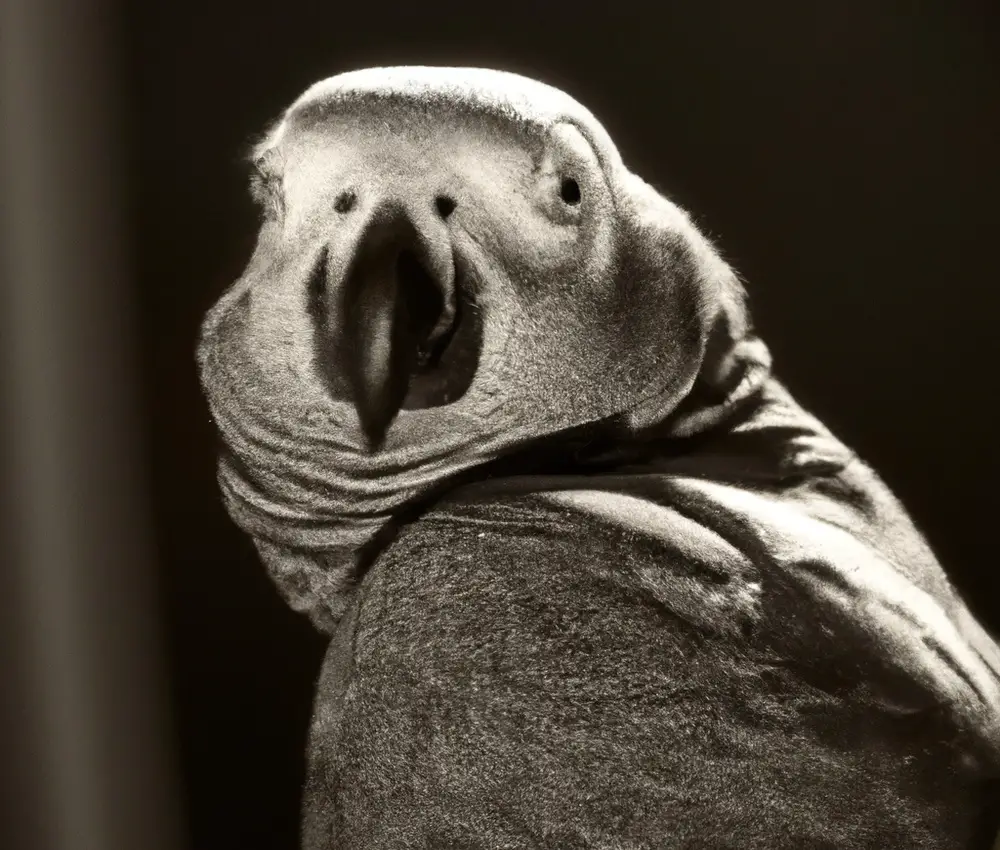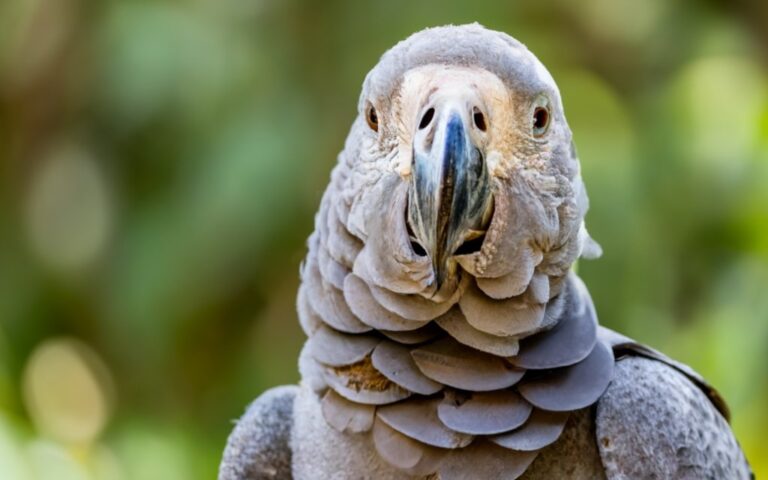What Are The Vocalizations Of African Grey Parrots?
Key Takeaways:
- African Grey Parrots have a wide range of vocalizations, including mimicry of human speech and complex vocalizations unique to their species.
- They use vocalizations to communicate with humans and fellow parrots, signaling their emotions, desires, and needs.
- African Grey Parrots have the ability to learn and imitate a diverse array of sounds, making them highly proficient talkers and mimics.
- Their vocal repertoire includes not only words and phrases but also whistles, clicks, and various sounds from their natural habitat.
Have you ever wondered what the mysterious sounds coming from African Grey Parrots mean? These captivating creatures have a repertoire of vocalizations that are both fascinating and unique.
From melodic tunes to uncanny mimicry, African Grey Parrots use their vocal abilities to communicate and express themselves.
In this article, we’ll dive into the world of African Grey Parrot vocalizations, exploring their natural habitat, behavior, and the different types of vocalizations they use to communicate. Get ready to be amazed by the diverse and intriguing sounds that these intelligent birds produce! So, let’s embark on this journey of discovery together and unravel the secrets behind the vocalizations of African Grey Parrots.
| Vocalization Type | Description |
|---|---|
| Whistles | African Grey Parrots can produce various melodious whistles. |
| Talking/Speech | These parrots are well-known for their ability to mimic and reproduce human speech. |
| Screams | African Grey Parrots may emit loud screeches or screams, especially when they feel threatened or agitated. |
| Chatter/Jabber | They often engage in chattering or jabbering, where they produce a string of unintelligible but energetic sounds. |
| Laughs | These parrots can imitate laughter sounds. |
| Squawks | They may emit loud squawking noises to express various emotions. |
| Cackles | Some African Grey Parrots cackle, which is a series of rapid and short vocalizations. |
Overview of African Grey Parrots
African Grey Parrots are highly intelligent and prized for their exceptional talking and mimicking abilities. They are native to the rainforests of West and Central Africa.
Description of African Grey Parrots
African Grey Parrots are medium-sized birds known for their striking grey feathers, red tails, and vibrant personalities. They have a stocky build with a large head and a short, hooked beak.
They can grow up to 13 inches in length and weigh around 400 grams.
These parrots have a high level of intelligence and are highly sought after as pets due to their ability to mimic human speech and their engaging personalities. African Grey Parrots are native to the rainforests of West and Central Africa and are known for their exceptional cognitive abilities.
Natural Habitat of African Grey Parrots
African Grey Parrots are native to the dense rainforests of West and Central Africa.
They are found in countries such as Ghana, Cameroon, and the Democratic Republic of Congo.
These parrots thrive in forests with tall trees and dense vegetation.
They prefer habitats with a mix of trees, including fruiting trees for food and nesting sites.
Their natural habitat provides them with a rich variety of plants, fruits, seeds, and insects to feed on.
The dense vegetation also offers them shelter and protection from predators.
Behavior of African Grey Parrots
African Grey Parrots are known for their high intelligence and complex behaviors.
They are social birds and thrive when given plenty of mental stimulation and social interaction.
They can be playful, curious, and affectionate towards their human caretakers.
However, they also have a sensitive side and may become stressed or bored if their needs are not met.
These parrots require a stable and nurturing environment to thrive.
Additionally, African Grey Parrots have a strong need for routine, so establishing a consistent daily schedule is important for their well-being.
Communication Methods of African Grey Parrots
African Grey Parrots communicate through vocalizations, mimicry abilities, and body language.
Vocalizations of African Grey Parrots
African Grey Parrots are known for their impressive vocal abilities. They have a wide range of vocalizations, including contact calls, alarm calls, and vocalizations during courtship and mating.
They can also mimic human speech and sounds from their environment.
Understanding and responding to their vocalizations is important for their well-being and communication.
Mimicry Abilities of African Grey Parrots
African Grey Parrots are renowned for their remarkable mimicry abilities.
They have the ability to mimic not just human speech, but also a wide range of sounds including laughter, doorbells, telephones, and other birds’ calls.
They can imitate the voices of their owners with astonishing accuracy, often sounding just like them.
These parrots have exceptional vocal control and can even imitate different accents and tones.
Their mimicry abilities are a form of communication and social interaction, allowing them to bond with their human companions and engage in meaningful interactions.
It is truly fascinating to witness the mimicry abilities of African Grey Parrots in action.
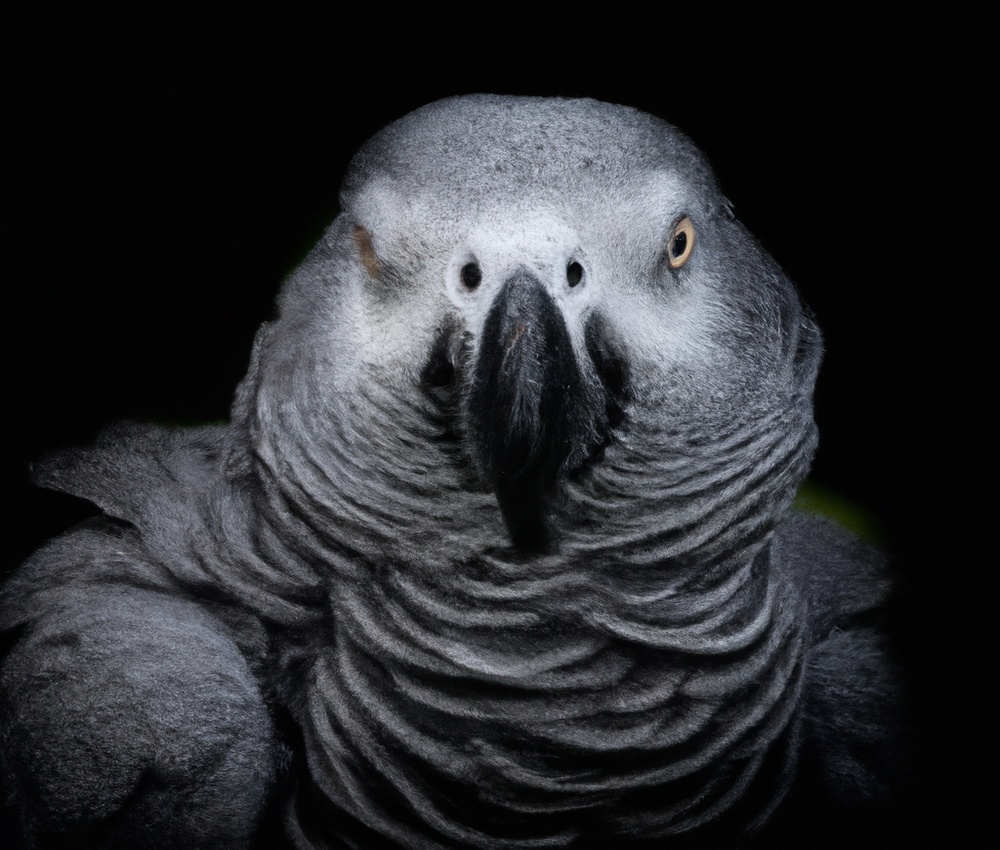
Body Language of African Grey Parrots
African Grey Parrots communicate not only through vocalizations but also through their body language. They use their feathers, posture, and movements to express themselves.
For example, fluffed feathers can indicate relaxation, while raised feathers may signal aggression or fear.
Paying attention to their body language helps us understand their emotions and needs.
Types of Vocalizations by African Grey Parrots
African Grey Parrots have various types of vocalizations, including contact calls, alarm calls, and vocalizations during courtship and mating.
Contact Calls of African Grey Parrots
Contact calls are a common form of vocalization among African Grey Parrots.
These calls are used to communicate with flock members, establish their presence, and maintain social cohesion.
Contact calls are short and simple, consisting of sharp and distinct whistles or squawks.
These vocalizations serve as a way for African Grey Parrots to stay connected and in touch with their companions, even when they are out of sight.
They are an essential part of their communication repertoire.

Alarm Calls of African Grey Parrots
Alarm calls are an important means of communication for African Grey Parrots. They use these calls to alert their flock to potential threats or danger in their environment.
Alarm calls are typically loud, harsh, and repetitive, serving to warn other parrots and animals in the vicinity.
This helps ensure the safety of the entire group. By recognizing and responding to these alarm calls, African Grey Parrot owners can also help keep their pets safe and secure.
Vocalizations during Courtship and Mating
African Grey Parrots use vocalizations during courtship and mating to communicate their readiness, attract mates, and establish a connection. Males may engage in complex vocal displays, including whistles, warbles, and distinctive calls, to impress females.
The females, on the other hand, may respond with soft cooing sounds to indicate interest.
These vocalizations play a crucial role in the courtship process, helping to establish pair bonds and initiate mating behaviors.

Understanding African Grey Parrot Vocalizations
Understanding African Grey Parrot vocalizations helps you communicate with your bird and build a stronger bond.
Benefits of Understanding Vocalizations
Understanding the vocalizations of African Grey Parrots can have several benefits.
Firstly, it allows you to communicate better with your parrot, as you can understand its needs, emotions, and intentions.
Secondly, it helps in identifying any signs of distress or illness, enabling you to provide timely care.
Additionally, it strengthens the bond between you and your parrot, enhancing your relationship and creating a positive and enriching environment for your feathered friend.
Ultimately, understanding vocalizations leads to a deeper understanding of your African Grey Parrot’s unique personality and enhances your overall parrot-keeping experience.
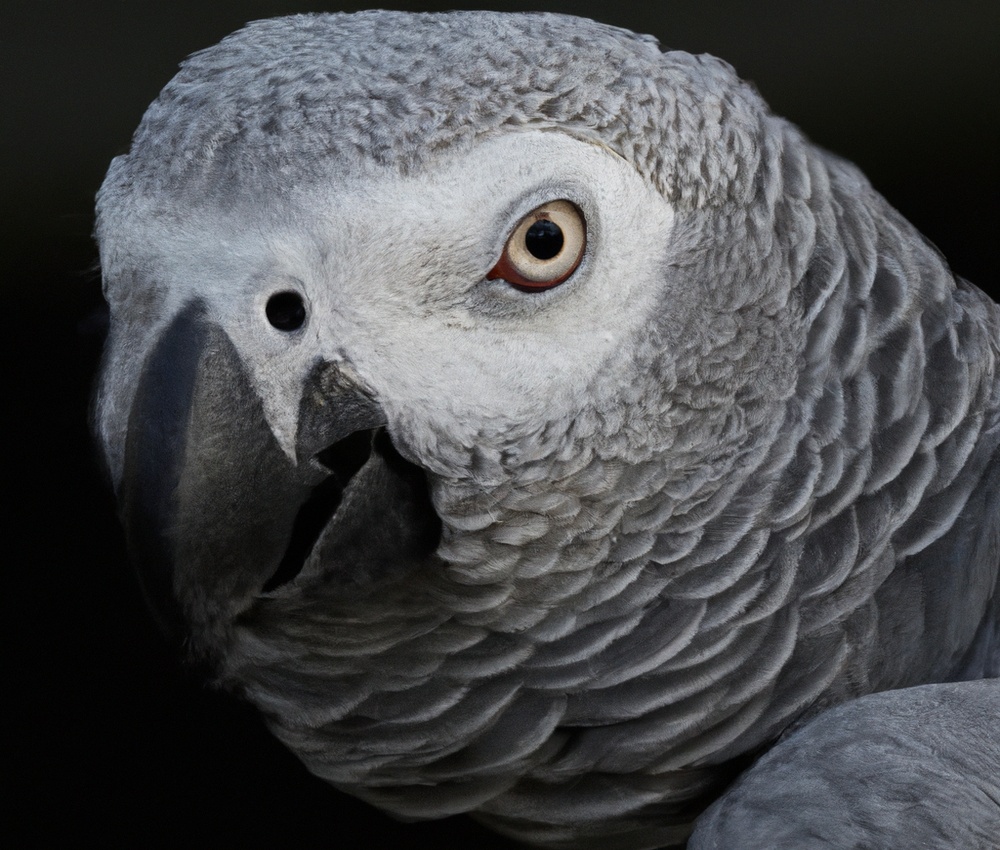
Recognizing Different Vocalizations
Recognizing different vocalizations in African Grey Parrots is essential for understanding their communication.
Listen for contact calls, which are short and repetitive, used to maintain flock contact.
Alarm calls are loud and sharp, indicating danger.
During courtship, parrots may make soft, melodious vocalizations.
Paying attention to these distinct sounds will help you understand your parrot’s needs and emotions.
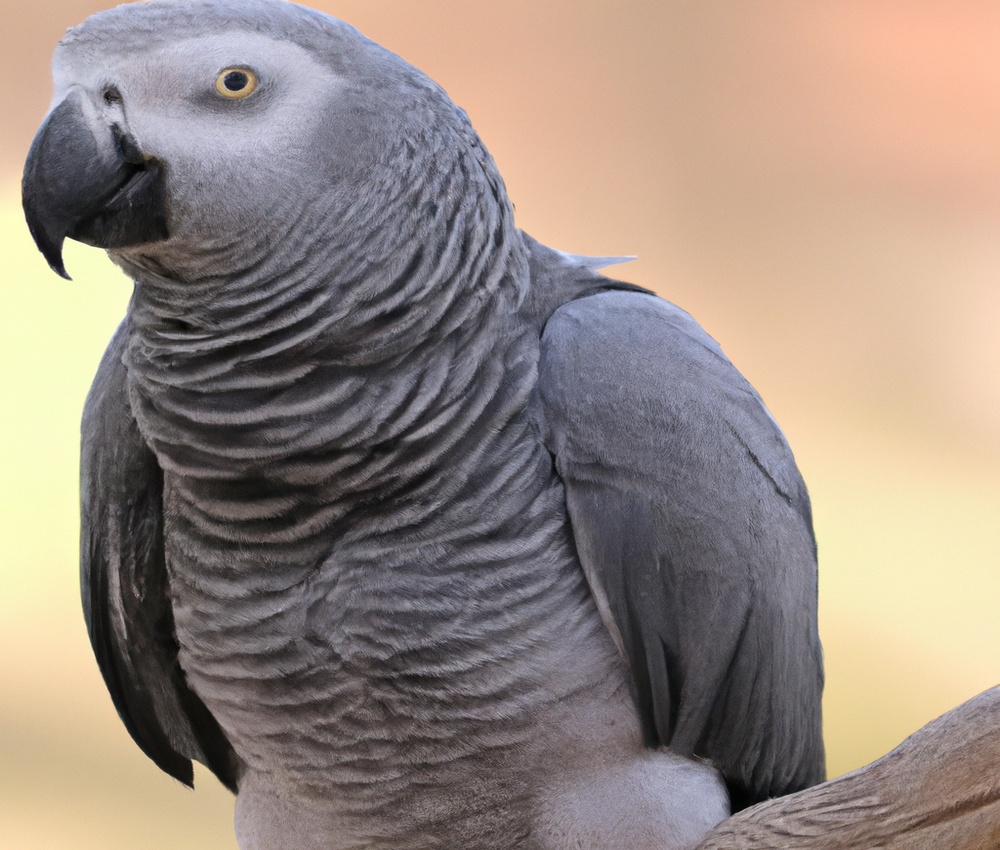
Responding to Vocalizations
Responding to vocalizations of African Grey Parrots is important to establish communication and build a bond. You can respond by imitating their calls or engaging in conversation.
Observing their body language and providing attention and interaction will also encourage further vocalizations.
Frequently Asked Questions about African Grey Parrot Vocalizations
How often do African Grey Parrots vocalize?
African Grey Parrots are known for their remarkable vocal abilities. They vocalize quite frequently, often engaging in constant chatter throughout the day.
These vocalizations can include a variety of sounds such as whistles, squawks, and even mimicry of human speech.
It’s important to note that the frequency of vocalizations can vary depending on the individual bird and its environment. Some African Grey Parrots may be more talkative than others, while others may be quieter.
Can African Grey Parrots learn to speak human language?
African Grey Parrots are well-known for their ability to learn and mimic human speech. They have a high intelligence and vocal learning capacity, allowing them to imitate various sounds, including human language.
With proper training and socialization, they can become proficient speakers, although individual abilities may vary.
How can I encourage vocalizations in my African Grey Parrot?
To encourage vocalizations in your African Grey Parrot, create a stimulating environment with plenty of toys, puzzles, and interactive activities.
Regularly engage in social interactions, such as talking, singing, and whistling, to encourage your parrot to mimic sounds.
Provide positive reinforcement, like treats or praise, when your parrot vocalizes, reinforcing their natural behavior.
Patience and consistency are key in encouraging vocalizations from your African Grey Parrot.
Final Verdict
African Grey Parrots are known for their incredible vocalizations, which range from contact calls to alarm calls, and even vocalizations during courtship and mating.
Understanding these vocalizations is important for bird owners, as it can help them communicate effectively with their pet and respond to their needs.
By recognizing different vocalizations and responding accordingly, owners can build a strong bond with their African Grey Parrot.
Encouraging vocalizations through positive reinforcement can also enhance the bird’s communication skills.
Ultimately, learning to understand and appreciate the vocalizations of African Grey Parrots can deepen the human-animal connection and create a harmonious relationship.

